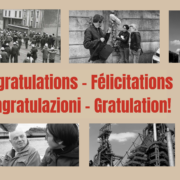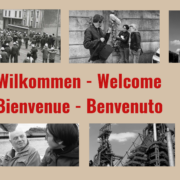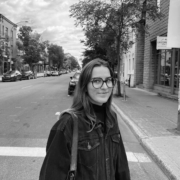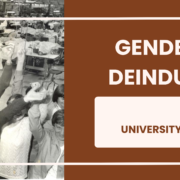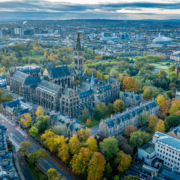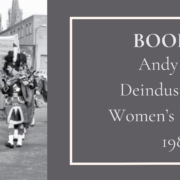Archive for month: June, 2024
Register for our Pre-conference Walking Tours and Film Screening
Our local partners have arranged pre-conference activities to give attendees a sense of Glasgow’s industrial and deindustrial history on June 24. We are offering three different walking tours and a screening at the National Library of Scotland’s Moving Image Archive.
Please register for your preferred activity as space is limited, particularly for the walking tours! If you have any questions, please reach out at deindustrialization@concordia.ca.
- Glasgow’s Shipbuilding Heritage, Fairfield Govan
Start time: 2.30 (finishing around 4.30pm; or 5.30pm for those taking the option of walking back to the city along the river)
Location: Fairfield Heritage Centre, Govan
Description: This visit will take us to Govan, one of the main shipbuilding communities on the Clyde and to the Fairfield Heritage Centre which is located in the old Victorian headquarters of one of the major shipbuilding companies on the river. Along the route we will pass the Mary Barbour statue – one of the few physical memorials to a female ‘Red Clydeside’ activist in the city. At the Fairfield Heritage Centre we will get a sense of the importance of the shipbuilding industry as well as its demise, as deindustrialisation deepened and yards closed. The museum story covers the occupational hazards of working in the yards, the pride the men had in their work, something of the prevailing workplace culture and the ‘hard man’ masculinity that prevailed, the powerful trade unions and the resistance to yard closures and job losses. We have the use of the Victorian shipyard boardroom at the end of the visit where we can listen to some extracts from oral histories of shipyard workers talking about their work and what losing their work meant to them, their families and their community. Weather permitting, participants can decide on a long walking route back to the city along the river (around 2.5 miles / one hour +), passing dock areas, including the Graving Dock and the preserved Finneston Crane, or returning to the city on the subway from Govan Cross.
Getting there: The easiest transport option is to take the subway to Govan and walk 10 mins along Govan Road to Fairfield. From the DéPOT Project Assembly meetings at the University of Glasgow a group will depart from the Advanced Research Centre at 2.10pm and take the subway at Kelvinhall to Govan.
***
- Gender, Family and Deindustrialisation in the National Library of Scotland’s Moving Image Archive.
Start time: 2.30 (finishing around 3.45pm)
Location: National Library of Scotland, Kelvinhall
Map: Location maps | National Library of Scotland (nls.uk)
General info: Kelvin Hall | National Library of Scotland (nls.uk)
Description: A visit to the National Library of Scotland’s Moving Image Archive. From home movies to documentaries, from industry to entertainment – the National Library of Scotland Moving Image Archive (formerly the Scottish Screen Archive) has something for everyone. You can explore around 100 years of Scotland’s history captured by amateur and professional film-makers.
Curator Ann Cameron has selected some films from the collection around the conference theme of gender, family and deindustrialisation. The visit will include an introduction to the archive, followed by the film screening and discussion afterwards. There will be the opportunity to browse their collection and listen to some additional materials.
Getting there: The Moving Image Archive is located at Kelvinhall in the West End of Glasgow, 6 or 7 minutes walk from the Advanced Research Centre at University of Glasgow where Project Assembly Meetings will be held. From the city centre it can be reached by subway to Kelvinhall Subway station. The station is around 7mins walk from the venue itself. Minimal walking required!
***
- Clydeside Carbon City Walking Tour — FULL
Start time: 4.00pm
Duration: 2 hours
Location: meet at Finnieston Crane.
Description: Glasgow was at the centre of the development of a global carbon economy and was itself transformed by coal and then oil technologies during the nineteenth and twentieth century. Join this tour to explore some of the key locations in a story of invention, industry, empire and local and global justice and injustice. The tour will be led by Ewan Gibbs from the University of Glasgow, who is a historian of Scotland’s energy industries. After starting at the Finnieston Crane and exploring its history of hauling locomotive engines on to steamships bound to far flung locations, we will then walk along the Clyde and through the city center. On the way, we’ll meet imperialists, industrialists, dockers, locomotive engineers, urban planners, sailors, tram drivers, soldiers and suburban commuters.
Over the course of seven stops, we’ll come to see that Glasgow’s heavy industries and role in commerce gave the city a central place in the globalised economy of the nineteenth century, including in the making of the early oil industry. As the tour progresses, the transformation of the urban environment through the ripping up of older coal-fuelled transportation and the rise of the car become clear. These choices were inherently political and inevitably had losers as well as winners. They have had a lasting impact on the local and global environment.
Getting there: From the Advanced Research Centre at the University of Glasgow, the crane can be reached on foot in around 30mins. Alternatively, you can take the subway to Partick and change to the overland train system heading east to Exhibition Centre station (two separate tickets required.) From the city centre, there are bus and train services that stop close to the crane. Take bus X19 from Renfield Street before West George Street (heading towards Govan) and get off at Lancefield Quay (next to what is known locally as the Squinty Bridge) or catch the frequent service train from Queen Street Station (lower level) to Exhibition Centre. The crane is about 10mins walk from Exhibition Centre station.
This tour is full and no longer accepting registrations.
***
- Glasgow Black History Walking Tour
Start time: 4pm
Location: David Livingstone Statue, Cathedral Square (city centre)
Duration: 1.5-2 hours
Description: Legacies of industry and deindustrialisation are highly visible in Glasgow but so too are other—not unconnected—aspects of the city’s history.
This walk takes participants on a historical journey through Glasgow’s mercantile past and examines the city’s connections with tobacco, slavery and the abolition movement. The tour meets at the David Livingstone Statue, Cathedral Square and ends outside GoMA, Royal Exchange Square.
The tour is provided by the Coalition for Racial Equality and Rights (CRER). You can read more about CRER’s work here: https://www.crer.org.uk/
Mauton Avoseh
Research Assistant

